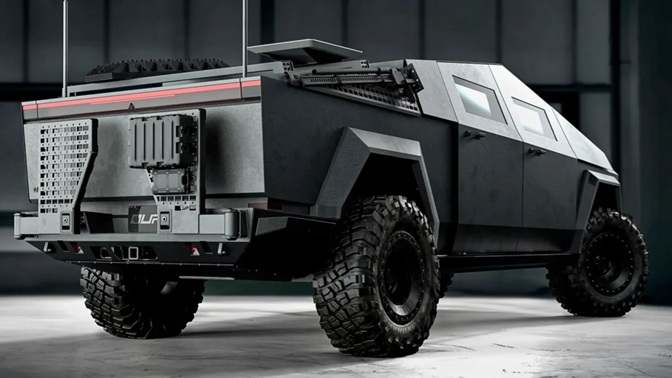The U.S. government’s spending habits have always been a topic of debate, but a recent discovery in the State Department’s 2025 procurement forecast has raised more than a few eyebrows. Among the various budget items, one particularly strange entry stands out: “Armored Tesla (Production Units)” with a staggering price tag of $400 million. That’s right—the government is apparently planning to spend a fortune on armored Teslas. But wait, it gets weirder.

What’s even more bizarre than the price tag is where this item is categorized. The armored Teslas are listed under NAICS code 311999, which refers to “All Other Miscellaneous Food Manufacturing.” That’s like finding a tank in the dessert aisle at the grocery store. If that weren’t odd enough, other armored vehicle purchases are also misplaced in the budget:
- Armored Sedans are listed under Soft Drink Manufacturing
- Armored BMW X5/X7 falls under Bottled Water Manufacturing
- Armored EVs (Not Sedans) are categorized under Ice Manufacturing
Either the State Department is planning a wild new fast-food venture, or someone seriously messed up the paperwork. The fact that these categories are so off the mark raises major questions about transparency and accuracy in federal spending. How does a $400 million armored Tesla order end up in a food budget?
A Mysterious Five-Year Plan
The budget document suggests that deliveries of these armored Teslas will begin in Q4 of 2025 and continue for five years. That’s a long-term investment, but there’s little explanation as to why such a massive fleet of armored electric vehicles is needed.
To put things into perspective, the other armored vehicle purchases total only $130 million combined. That means Tesla’s armored fleet alone costs over three times more than all other armored vehicle purchases listed. So, why the huge focus on Teslas?
When we hear “armored Tesla,” the Cybertruck naturally comes to mind. Tesla has marketed the Cybertruck as bulletproof and durable, even demonstrating it in dramatic ways—like when Elon Musk famously threw a metal ball at the truck’s window (which promptly shattered, but let’s not dwell on that).
However, the Cybertruck’s armor capabilities are actually quite limited. While its stainless-steel body might deflect low-velocity bullets, it’s far from being a true military-grade armored vehicle. For those kinds of protection levels, third-party modifications are necessary. Some companies, like Unplugged Performance and Archimedes Defense, have announced plans to upgrade Cybertrucks with higher levels of armor, making them better suited for government or military use.
Why Does the State Department Need So Many Armored EVs?
One of the biggest questions is: Why does the U.S. State Department need $530 million worth of armored vehicles? Security is obviously a priority, but such a massive budget allocation—especially one with a vague description—raises concerns about government transparency and spending priorities.
While the U.S. government does have a history of using armored vehicles for diplomats and high-ranking officials, this particular spending spree is unusually large and strangely categorized. Is it a simple clerical error, or is there more to this story?
Could Elon Musk’s DOGE Squad Investigate?
Given Elon Musk’s recent appointment to the Department of Government Efficiency (DOGE) (a team reviewing U.S. government spending), one might wonder if he will investigate this strange budget item. After all, if anyone knows Teslas, it’s Elon.
However, Musk may need to recuse himself from reviewing this particular line item due to an obvious conflict of interest. Still, it wouldn’t be surprising if his efficiency-focused team eventually takes a closer look at why Teslas—and other armored vehicles—are appearing under food and beverage manufacturing categories.
Is There a Legitimate Explanation?
To be fair, there could be a logical reason behind these purchases. Maybe the State Department is moving toward an all-electric armored fleet for sustainability reasons. Electric vehicles reduce reliance on fossil fuels, and an armored Tesla fleet could align with broader green initiatives.
However, the lack of clear explanations—and the fact that these vehicles are listed in totally unrelated budget categories—makes the situation highly suspicious.
At the end of the day, this isn’t just about armored Teslas—it’s about government accountability and transparency. When taxpayers see $400 million allocated to an oddly categorized purchase, they deserve clear answers. The strange budgeting raises the risk of mismanagement, inefficiencies, or even potential misuse of funds.
Until more details emerge, we’re left with a lot of questions and very few answers. Is this just an administrative mistake, or is there something deeper at play? And most importantly—who at the State Department thought armored Teslas belonged in the food manufacturing budget? Only time will tell, but for now, this is certainly one of the strangest budget items we’ve seen in a while. Stay tuned as we keep an eye on this mystery!
Related Post
